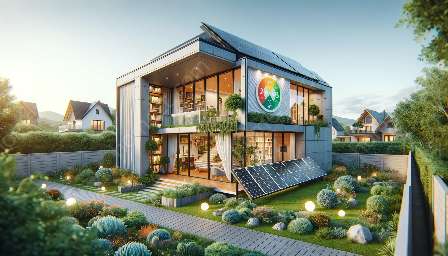Welcome to our comprehensive guide on energy-efficient construction materials. In this topic cluster, we will explore the benefits of using energy-efficient materials in home construction, their impact on creating energy-efficient homes, and the various types of materials available. By understanding the importance of these materials and how they contribute to sustainable and eco-friendly construction, you can make informed decisions when building or renovating your home.
The Importance of Energy-Efficient Construction Materials
Energy-efficient construction materials play a crucial role in reducing energy consumption, mitigating environmental impact, and enhancing the overall sustainability of homes. By using these materials, homeowners can significantly lower their energy bills, decrease their carbon footprint, and create more comfortable living spaces.
Benefits of Using Energy-Efficient Construction Materials
There are numerous benefits associated with utilizing energy-efficient construction materials. Some of the key advantages include:
- Lower Energy Costs: Energy-efficient materials help reduce heating and cooling expenses, leading to long-term cost savings for homeowners.
- Environmental Sustainability: Using these materials contributes to a greener environment by conserving energy and reducing greenhouse gas emissions.
- Enhanced Comfort: Energy-efficient materials can improve indoor air quality, regulate temperature, and create a more comfortable living environment.
- Increased Property Value: Homes built with energy-efficient materials often have higher resale value due to their sustainable and cost-effective features.
Types of Energy-Efficient Construction Materials
There are various types of energy-efficient construction materials that can be incorporated into home building and renovation projects. Some of the most commonly used materials include:
- Insulation: High-quality insulation materials, such as spray foam, fiberglass, and cellulose, play a critical role in reducing heat transfer and improving energy efficiency.
- Windows and Doors: Energy-efficient windows and doors with low-E coatings, double or triple glazing, and proper weather-stripping provide effective insulation and minimize heat loss.
- Roofing Materials: Cool roofs, made of reflective materials that reduce heat absorption, and insulated roofing systems help control indoor temperatures and decrease the need for excessive cooling.
- Lighting and Appliances: Energy-efficient lighting fixtures, such as LED bulbs, and energy-star rated appliances contribute to lower electricity consumption within homes.
- Sustainable Building Materials: Renewable and eco-friendly building materials, including bamboo, reclaimed wood, and recycled steel, offer durable and sustainable options for construction.
Creating Energy-Efficient Homes
Integrating energy-efficient construction materials is essential for creating energy-efficient homes. By adopting a holistic approach to home design and construction, homeowners can achieve optimal energy performance and sustainability. Consider the following strategies:
- Energy-Efficient Design: Incorporate passive solar design, proper orientation, and efficient layout to maximize natural lighting and ventilation while minimizing energy usage.
- Sealing and Insulation: Ensure a well-insulated building envelope and minimize air leaks to improve thermal performance and reduce energy waste.
- High-Performance HVAC Systems: Install energy-efficient heating, ventilation, and air conditioning systems to maintain indoor comfort with minimal energy consumption.
- Renewable Energy Integration: Explore options for integrating renewable energy sources, such as solar panels or wind turbines, to generate clean power for the home.
- Monitoring and Maintenance: Implement regular maintenance and monitoring practices to optimize energy efficiency and identify opportunities for improvement.
Conclusion
Energy-efficient construction materials are instrumental in creating sustainable, cost-effective, and comfortable homes. By choosing the right materials and implementing energy-efficient design strategies, homeowners can significantly reduce their environmental impact, lower their energy bills, and enjoy a healthier living environment. Whether you are building a new home or renovating an existing one, prioritizing energy-efficient construction materials is a wise investment for both your wallet and the planet.


